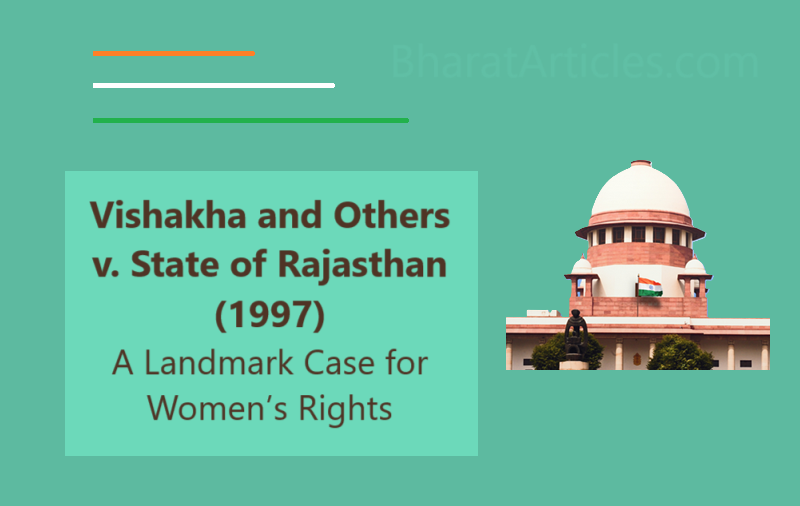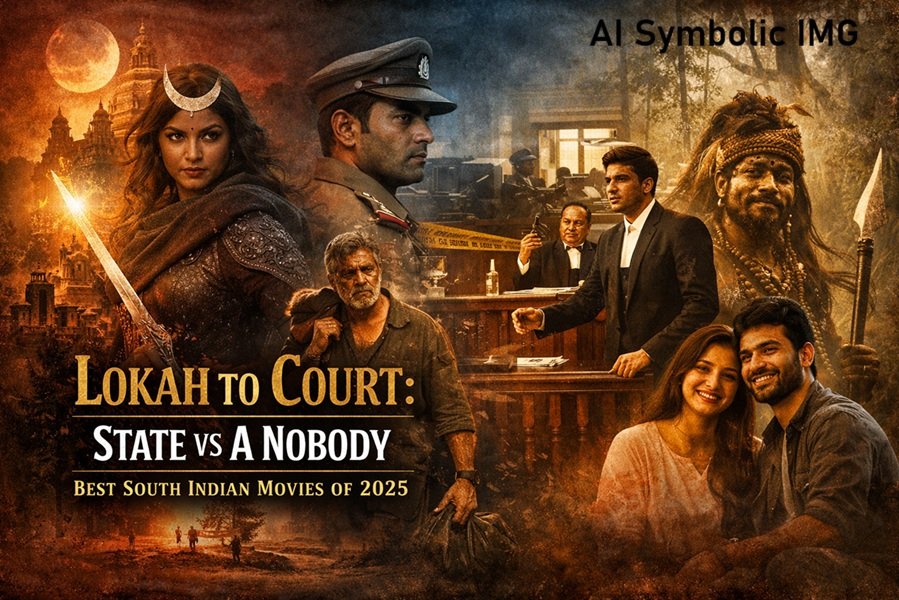
The case of Vishakha and Others v. State of Rajasthan is a watershed moment in Indian legal history, particularly in addressing sexual harassment at the workplace. Decided by the Supreme Court of India in 1997, this case laid down guidelines to protect women from sexual harassment in the absence of specific legislation. It is regarded as a milestone for gender equality and workplace safety.
Background of the Case
The case arose following the brutal gang rape of Bhanwari Devi, a social worker from Rajasthan. Bhanwari Devi was working with the Women’s Development Project to combat child marriage and other harmful practices. In 1992, she attempted to prevent the marriage of a one-year-old girl in a rural village. This act enraged members of the community, and as retribution, she was gang-raped by upper-caste men in her village.
Despite Bhanwari Devi’s courage in reporting the crime, the justice system failed her. The trial court acquitted the accused, citing lack of evidence and societal biases. This incident highlighted the absence of legal mechanisms to address workplace harassment and protect women from violence.
Women’s rights groups, led by the Vishakha organization, filed a public interest litigation (PIL) in the Supreme Court, seeking redressal and the establishment of safeguards against sexual harassment at the workplace.
Key Legal Issues
- What constitutes sexual harassment at the workplace?
- Can the court create guidelines in the absence of specific legislation?
- What is the scope of Article 21 (Right to Life and Personal Liberty) in protecting women’s dignity?
Arguments by the Petitioners
- Violation of Fundamental Rights: The petitioners argued that sexual harassment at the workplace violates several fundamental rights guaranteed under the Constitution, including:
- Article 14 (Right to Equality)
- Article 15 (Prohibition of Discrimination)
- Article 19(1)(g) (Right to Practice Any Profession)
- Article 21 (Right to Life and Personal Liberty)
- Need for Preventive Measures: The petitioners contended that the absence of legislative provisions left women vulnerable to harassment, necessitating judicial intervention.
- International Obligations: The petitioners cited India’s ratification of international conventions, such as the Convention on the Elimination of All Forms of Discrimination Against Women (CEDAW), to argue for the incorporation of global standards to protect women’s rights.
Judgment by the Supreme Court
The Supreme Court delivered a landmark judgment on August 13, 1997, establishing guidelines to address sexual harassment at the workplace. The key highlights of the judgment are as follows:
- Definition of Sexual Harassment: The Court defined sexual harassment broadly to include:
- Physical contact and advances
- Demand or request for sexual favors
- Sexually colored remarks
- Display of pornography
- Any other unwelcome physical, verbal, or non-verbal conduct of a sexual nature
- Vishakha Guidelines: The Court laid down a set of guidelines, known as the Vishakha Guidelines, to prevent and redress sexual harassment at the workplace. These included:
- Employer’s Responsibility: Employers must ensure a safe working environment free from sexual harassment.
- Complaint Mechanism: Establishment of a complaints committee to address grievances, with a majority of female members and an independent external member familiar with issues of sexual harassment.
- Awareness and Training: Employers must raise awareness about sexual harassment through training and dissemination of information.
- Confidentiality: Complaints must be handled with confidentiality to protect the dignity of the complainant.
- Binding Nature: The Court declared that these guidelines would have the force of law until Parliament enacted specific legislation on the subject.
- Role of Fundamental Rights: The judgment reinforced the idea that the right to a safe workplace is intrinsic to the right to life and dignity under Article 21 of the Constitution. It also emphasized the principle of equality under Articles 14 and 15.
Impact of the Judgment
- Catalyst for Legislation: The Vishakha Guidelines served as the foundation for the enactment of the Sexual Harassment of Women at Workplace (Prevention, Prohibition, and Redressal) Act, 2013. This law codified the guidelines and expanded protections for women in the workplace.
- Empowerment of Women: The judgment empowered women to speak up against workplace harassment and seek redressal, fostering a culture of accountability and respect.
- Judicial Activism: The case is a prime example of judicial activism, where the judiciary stepped in to fill a legislative vacuum and uphold constitutional rights.
- Global Recognition: The judgment aligned Indian law with international standards and obligations, reinforcing the country’s commitment to gender equality and human rights.
Criticism and Challenges
While the Vishakha Guidelines were widely celebrated, they also faced criticism and challenges:
- Implementation Issues: Many organizations failed to implement the guidelines effectively, leading to continued instances of workplace harassment.
- Lack of Awareness: A significant number of women, especially in informal sectors, remained unaware of their rights and the mechanisms available to address harassment.
- Delay in Legislation: Despite the Vishakha judgment, it took over 15 years for Parliament to enact specific legislation, highlighting the slow pace of legal reform.
Conclusion
The Vishakha and Others v. State of Rajasthan case is a landmark in Indian jurisprudence, setting a precedent for protecting women’s rights and ensuring workplace safety. It underscored the judiciary’s proactive role in addressing societal issues and upholding constitutional principles. Although challenges remain, the case marked the beginning of a transformative journey toward gender justice and equality in India.
Read also: Landmark Judgments in India






